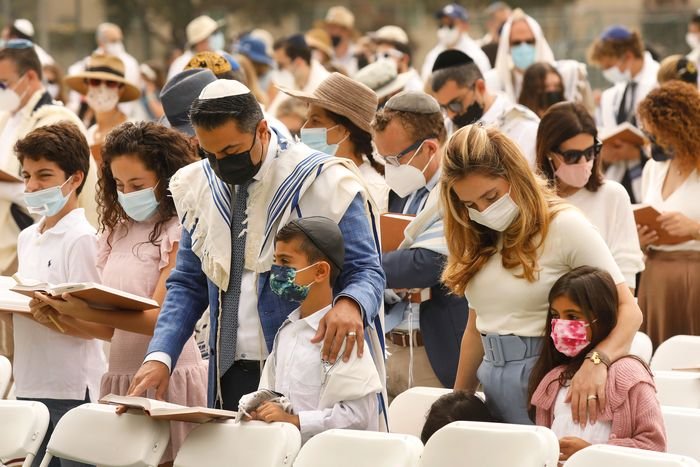The Significance and Etiquette of Yom Kippur Greetings

Yom Kippur, the Day of Atonement, stands as the holiest day in the Jewish calendar, a time for reflection, repentance, and prayer. As such, the greetings exchanged during this solemn period hold deep significance, embodying the essence of the observance and the collective spirit of the community seeking forgiveness and a fresh start. This article explores the tradition, meaning, and appropriate use of Yom Kippur greetings, providing a comprehensive guide to navigating this sacred time with respect and understanding.
Understanding Yom Kippur
Before delving into the greetings themselves, it’s crucial to grasp the significance of Yom Kippur. Observed on the 10th day of the Hebrew month of Tishrei, Yom Kippur concludes the Ten Days of Repentance that begin with Rosh Hashanah, the Jewish New Year. It’s a day devoted to atonement and reconciliation, both with God and fellow human beings. The observance involves a 25-hour fast, intensive prayer, and the abstention from physical comforts, underscoring the day’s solemnity and the introspective focus of its observers.
The Essence of Yom Kippur Greetings
Yom Kippur greetings are more than mere formalities; they are expressions of hope, prayer, and solidarity. They reflect the dual aspirations of divine forgiveness and human reconciliation, capturing the day’s profound spiritual dimensions. The greetings serve not only to honor the day’s sanctity but also to strengthen communal bonds, offering support and empathy as individuals embark on their personal journeys of atonement.
Traditional Yom Kippur Greetings
- “G’mar Chatima Tova” (גמר חתימה טובה): This traditional greeting, meaning “May you be sealed in the Book of Life for a good year,” is the most widely used. It references the belief that God inscribes individuals’ fates for the coming year in the Book of Life, with Yom Kippur marking the final sealing. This greeting encapsulates the essence of Yom Kippur’s purpose: the hope for divine mercy and a year marked by peace, health, and happiness.
- “Tzom Kal” (צום קל): Translating to “Have an easy fast,” this greeting acknowledges the physical rigor of the Yom Kippur fast and expresses the wish for strength and endurance. While the day’s focus is spiritual, this greeting recognizes the human aspect of the observance, offering a word of encouragement for the physical challenge involved.
Modern Expressions and Variations
In contemporary practice, variations of traditional greetings and more generalized expressions of goodwill are also common, particularly in less formal or non-traditional contexts. Phrases such as “Have a meaningful fast” or simply “Yom Kippur sameach” (wishing a “happy” Yom Kippur, though less common due to the day’s solemn nature) are examples. These reflect a broader and more inclusive approach to the holiday, accommodating diverse levels of observance and interpretation within the Jewish community.
The Etiquette of Yom Kippur Greetings
When offering Yom Kippur greetings, context is key. The traditional “G’mar Chatima Tova” is most appropriate in the days leading up to Yom Kippur, especially after Rosh Hashanah, signaling a wish for the individual’s inscription in the Book of Life. On Yom Kippur itself, particularly before the commencement of the fast, “Tzom Kal” is a fitting expression of solidarity and support.
In digital communications or among those who may not observe the fast strictly, more generalized expressions of goodwill or reflections on the day’s themes of forgiveness and renewal may be appropriate. It’s essential to consider the relationship with the individual and their level of observance to choose the most fitting greeting.
Conclusion
Yom Kippur greetings are a window into the profound spiritual and communal dimensions of the Day of Atonement. They encapsulate the hopes, prayers, and shared journey of a community seeking renewal and forgiveness. As we navigate the complexities of modern life, these greetings remind us of the enduring values of reflection, repentance, and the pursuit of a better, more meaningful existence. Whether through traditional phrases or modern expressions, Yom Kippur greetings offer a way to connect, support, and uplift one another during this solemn and significant time.
In offering a Yom Kippur greeting, we participate in a timeless tradition, extending beyond mere words to touch the very essence of what it means to be part of a community, to seek forgiveness, and to aspire towards a year of peace, health, and fulfillment. As we utter these greetings, we reaffirm our connections to each other and to the shared heritage that sustains us, bridging the gap between the divine and the human, the eternal and the temporal. May your observance be meaningful, your fast easy, and your inscription in the Book of Life sealed for a good year.




